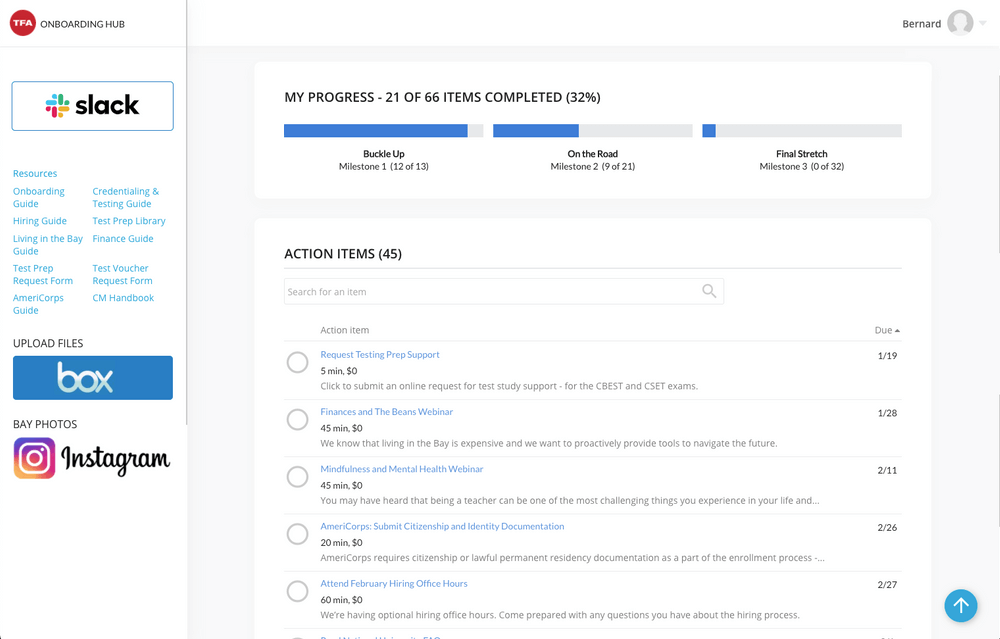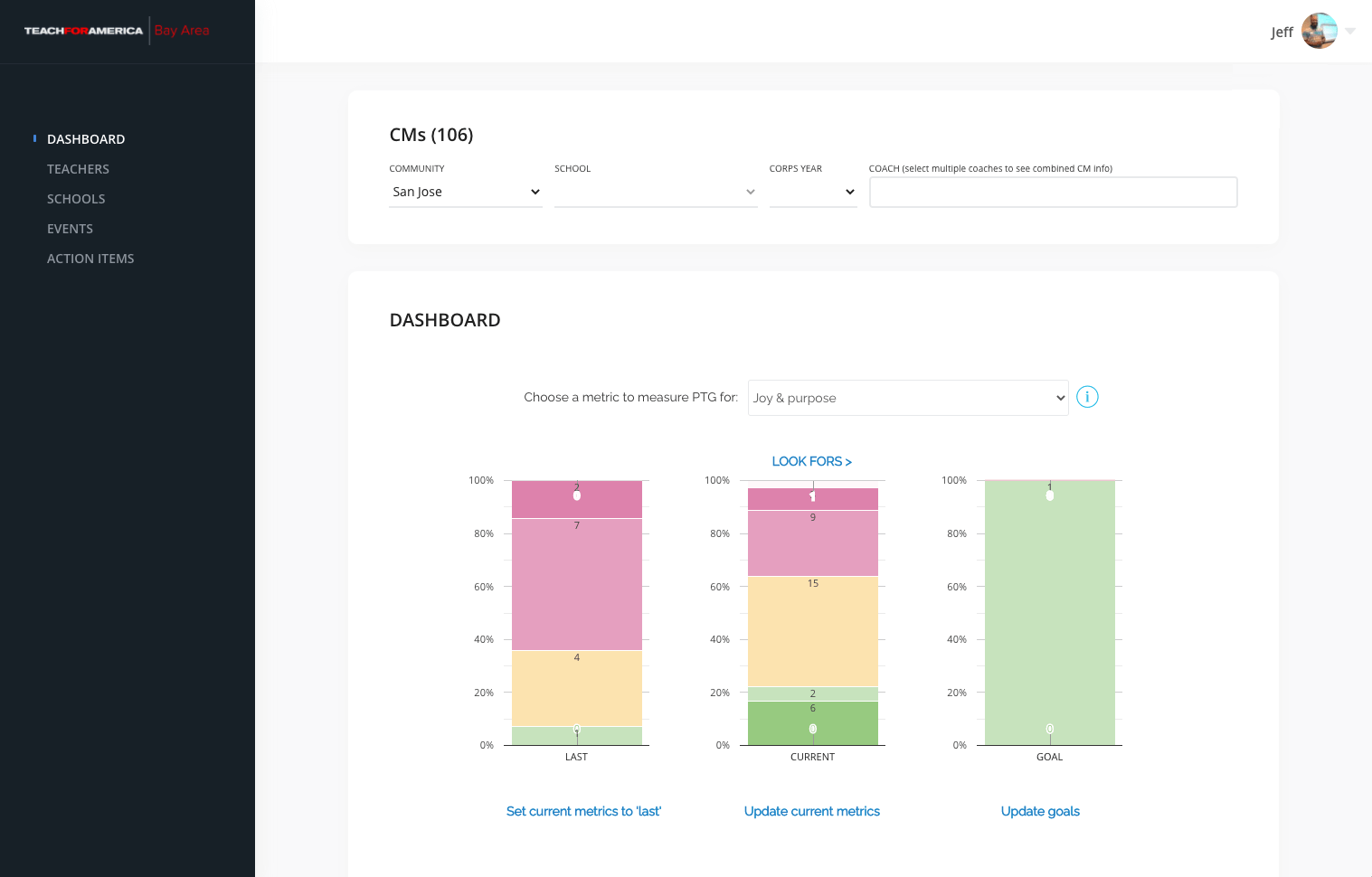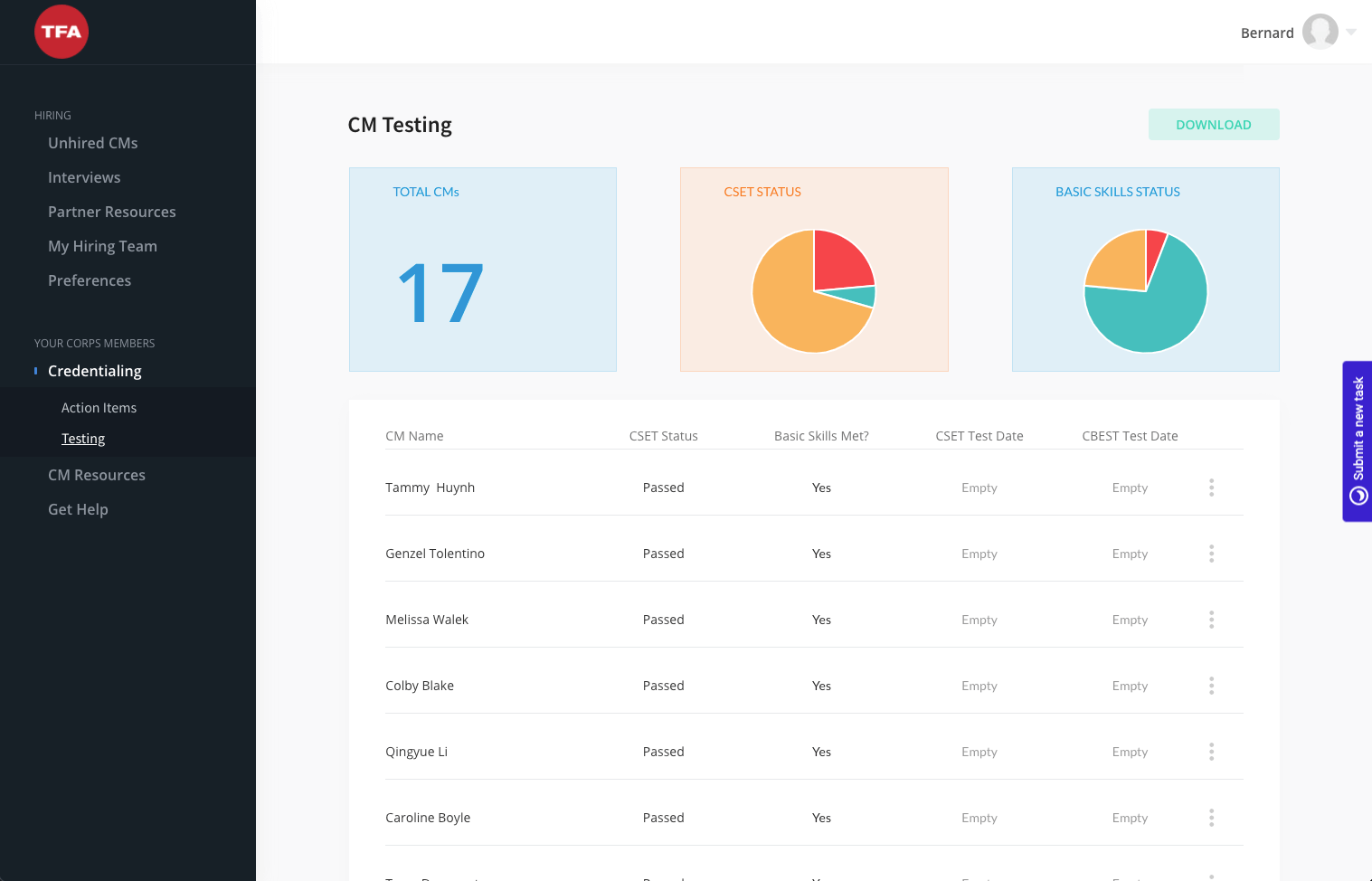Wendy Kopp was just a young undergraduate student at Princeton University when, for her senior thesis in 1989, she first conceived of the idea for a volunteer organization that focused on bringing education to disadvantaged communities. About a year later, in 1990, she founded Teach For America (TFA), a nonprofit that enlists promising future leaders to enter a two-year commitment to teach in low-income communities.
Today, TFA continues to empower its students through an ever-expanding network of enthusiastic volunteers. But managing the organization at scale requires innovations in technological tools, and that’s where Bubble’s no-code platform comes in.
In the San Francisco Bay Area region, TFA used Bubble with the help of no-code agency AirDev to build their first “Teacher Hub” application, originally designed to assist coaches in supporting their portfolio of active teachers through a CRM-like tool. Over five years, the application has been expanded to enable TFA staff to support corps members across each stage of their TFA journey.
We dive deeper into the tech behind TFA’s internal hub, built without code using Bubble.
Life before no-code for Teach for America
Before TFA built their “Teacher Hub” application, the volunteers for TFA’s Bay Area region had to rely on manually dealing with task management and internal communications: from unwieldy spreadsheets to non-specific email blasts, they had no option but to use slow and inefficient methods for rather basic day-to-day operations. This resulted in a steady stream of problems with regards to spreadsheet data validation and handling of permissions. Furthermore, the lack of personalized emails made it difficult to address the specific needs of TFA’s diverse body of teachers, who devote themselves to a variety of subjects at different levels.
TFA first came across Bubble in 2015 through one of their former employees. Originally, they wanted to create a robust network of Google Sheets that would make a coach’s portfolio of active teachers more manageable, akin to a CRM tool.
They found the speed and flexibility of Bubble particularly appealing, especially when contrasted with the alternative of hiring a prohibitively expensive contractor to design a custom web application. Ultimately, Bubble’s powerful and simple to use tools allowed them to create and launch the exact kind of interface that they wanted in about four weeks.
The Original Teacher Hub Application
TFA built and deployed the original coaching tool in just four weeks. The application had three user roles with varying permission & privacy levels: admins, coaches, and corps members.
- Corps members could login to track their metrics and submit self-assessments
- Coaches could login to view their portfolio at a glance (for prioritization) and update metrics and notes
- Admins had full permissions to manage the application.
The Teacher Hub also featured complex dashboards showing heat maps and data visualizations broken down by sub-region.

Additionally, the kind of tool that TFA sought to develop required tight, role-based rules to protect sensitive information. Data security and privacy were critical considerations when developing the application, which is why although administrators have full access to its database, coaches and corps members can only see the data that concerns their respective roles (i.e. the former can only see their portfolio of teachers, while the latter are restricted to their own individual information). Due to these exact security concerns, users are redirected away from any pages that they shouldn’t be allowed to see, while large and sensitive documents are stored in Box through Bubble's integration.
How TFA changed their app over time without using engineers
Based on the success of the original model, the platform has been expanded over a five-year period to help staff support corps members across each stage of their journey. TFA created the following tools in their Bubble app:
- For Onboarding: a task management tool with personalized checklists for each incoming teacher (certifications, documents, etc.)
- For Training: CRM tool for coaching/support of teachers during intensive 6-week training program
- For Placement: internal job board and interview planning tool for school partners looking to hire corps members.
Each component of the Hub enables TFA’s staff members to collect data from corps members and external partners seamlessly, and use it to make decisions about how to best allocate resources. Hundreds of performance metrics for corps members are consistently tracked using a 1-5 evaluation scale. This leads to better teacher preparation and support, which results in better student outcomes.
As the app has grown, new roles have been added, metric rubrics have been refreshed, and the application has undergone a design facelift. It now includes many more features, such as:
- Email integration to send personalized notifications to specific workers and groups
- Integration with TFA’s Salesforce instance
- Tracking of a larger multitude of KPIs, and data visualizations that help uncover actionable insights for the organization.
Since each metric has a different rubric for what each score represents, a “score” object was built using Bubble’s data-handling functionalities with entries for each number and fields for the rubric description for a given metric, thus making it much easier to edit rubrics quickly.


These days, TFA’s application boasts dozens of pages and hundreds of workflows, including thousands of users, nearly 50,000 tasks assigned, and tens of thousands of updated metrics; and with it, they can continue to help incoming corps members through every stage of their journey, from their onboarding and all the way through their training and placement.
TFA remains fully loyal to the original vision of Wendy Kopp—a vision that has successfully grown and expanded across the years from 400 teachers to over 5,000 fellows reaching 350,000 students across all grades and subjects. Teach for America also continues to see constant innovation and improvement from within, using a no-code tool like Bubble to make accessible and efficient tech.
Build your app on Bubble's Free plan. No need to upgrade until you're ready to launch your app.
Join Bubble




